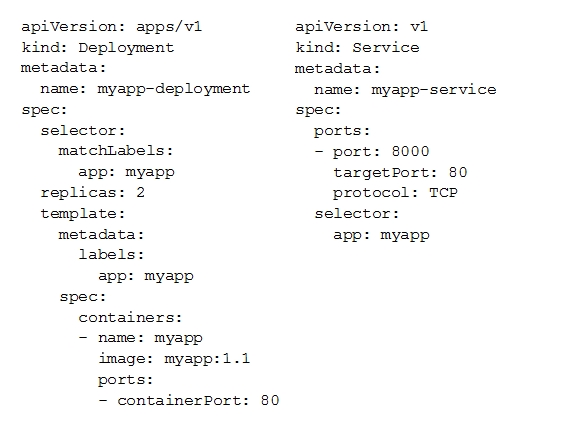You are hosting an application on bare-metal servers in your own data center. The application needs access to Cloud Storage. However, security policies prevent the servers hosting the application from having public IP addresses or access to the internet. You want to follow Google-recommended practices to provide the application with access to Cloud Storage. What should you do?
C
You want to deploy an application on Cloud Run that processes messages from a Cloud Pub/Sub topic. You want to follow Google-recommended practices. What should you do?
D
You need to deploy an application, which is packaged in a container image, in a new project. The application exposes an HTTP endpoint and receives very few requests per day. You want to minimize costs. What should you do?
B
Your company has an existing GCP organization with hundreds of projects and a billing account. Your company recently acquired another company that also has hundreds of projects and its own billing account. You would like to consolidate all GCP costs of both GCP organizations onto a single invoice. You would like to consolidate all costs as of tomorrow. What should you do?
D
Reference:
https://cloud.google.com/resource-manager/docs/migrating-projects-billing
You built an application on Google Cloud that uses Cloud Spanner. Your support team needs to monitor the environment but should not have access to table data.
You need a streamlined solution to grant the correct permissions to your support team, and you want to follow Google-recommended practices. What should you do?
B
For analysis purposes, you need to send all the logs from all of your Compute Engine instances to a BigQuery dataset called platform-logs. You have already installed the Cloud Logging agent on all the instances. You want to minimize cost. What should you do?
C
You are using Deployment Manager to create a Google Kubernetes Engine cluster. Using the same Deployment Manager deployment, you also want to create a
DaemonSet in the kube-system namespace of the cluster. You want a solution that uses the fewest possible services. What should you do?
C
Reference:
https://cloud.google.com/kubernetes-engine/docs/how-to/cluster-access-for-kubectl
You are building an application that will run in your data center. The application will use Google Cloud Platform (GCP) services like AutoML. You created a service account that has appropriate access to AutoML. You need to enable authentication to the APIs from your on-premises environment. What should you do?
B
Reference:
https://cloud.google.com/vision/automl/docs/before-you-begin
You are using Container Registry to centrally store your company's container images in a separate project. In another project, you want to create a Google
Kubernetes Engine (GKE) cluster. You want to ensure that Kubernetes can download images from Container Registry. What should you do?
C
You deployed a new application inside your Google Kubernetes Engine cluster using the YAML file specified below.
You check the status of the deployed pods and notice that one of them is still in PENDING status:
You want to find out why the pod is stuck in pending status. What should you do?
C
Reference:
https://cloud.google.com/run/docs/gke/troubleshooting